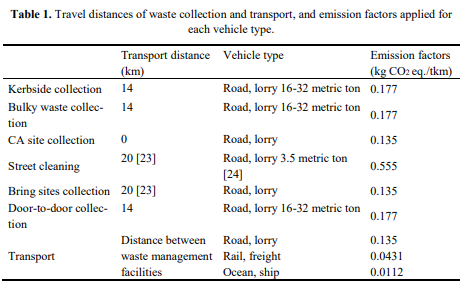Life cycle assessment of the solid waste
Table of Contents
REPAIR project
http://h2020repair.eu/
A geodesign decision support environment (GDSE) analysing metabolic flows and urban processes within Europe.
Data resource:
Assessingthe Transition of Municipal Solid Waste Management Using Combined Material Flow Analysis and Life Cycle Assessment
Dan Wang
$^1$ Institute of Soil Ecology and Remediation, School of Life Science, Taizhou University, Taizhou, Zhejiang, P.R. China
$^2$ International Doctoral Innovation Centre, Department of Chemical and Environmental Engineering, University of Nottingham Ningbo China, Ningbo, Zhejiang, P.R. China
Introduction
- Municipal solid waste (MSW).
- Refuse-derived fuel (RDF).
- Material recovery facility (MRF)
- Three historical situations in 2001/02, 2006/07 and 2016/17 cor-responding to three transitional stages in Nottingham in response to the EU waste directives were investigated and assessed.
- MFA is perfromed by STAN v2.6 (http://stan2web.net/).
- MSW was conceptualized as household waste which ncludes all waste collected from household sources and street cleaning.
- Separately collected commercial waste, industrial waste and healthcare waste were excluded from the scope of assessment.
- Functional unit of LCA was defined as the treatment of one ton of MSW, to ensure the situations were comparable to each other.
- The MSW management processes include waste generation, collection, transfer,
transport, treatment and disposal. - Considering heat recovered MSW returns to home heating.
- Different emission factors of electricity in three years.
Life Cycle Inventory
- GHG emission factor for each vehicle type was taken from Ecoinvent v3 database.
- Distances travelled in kerbside collection, bulky waste collection and door-to-door collection were modelled based on the length of accessible street within Lower Layer Super Output Areas (LSOA) Google Earth, the average population within LSOA and MSW generation per capita in Nottingham.
- Electricity and diesel consumed for the operation of transfer
station were 4 kWh/t and 0.84 kg/t, respectively. - Distances between LSOA and waste management facilities and distances between facilities were estimated based on their locations using Google Earth and Google map.

- For landfill, diesel and electricity consumptions for the operation of landfill were 1.8 kg/t and 8 kWh/t, respectively.

- For incineration and energy recovery:

Electricity and fuel oil consumed to operate incineration plant were 62 kWh/t and 3.76 kg/t, respectively. - The recycling part refer to an England-based report, which compares GHG avoided by material recycling and landfilling.
- For composting, 36% of garden waste was assumed to be non-compostable material.
- Material recovery facility. Considering diesel and electricity consumption for two facilities in Nottingham.
- GHG emission from the incineration of RDF could be calculated based on the mass and fossil carbon content of RDF.
Results and discussions
- Three material flows are showed, with the flow much more complex as the time goes by.
- Several indicators are measured including recycling rate, composting rate, landfill rate.
- From the results by LCA, CO2-eq significantly reduced with the diversion of waste from landfill to more sustainable ways like recycling, composting, and incineration with energy recovery.
- GHG produced by decomposition of garden waste and facility operation is higher than the saved one by avoiding landfilling.
- The calculated energy recovery efficiency of Eastcroft EfW is lower than the reported ones.
- Pay attention to the GHG of recyclable materials induced by the long distance transmission between reprocessing facilities, which are even located overseas.

A potential research point: the number and the geographical locations of the reprocessing facilities. Do they offer a appropriate and economic choice for material recycling?
Recommendations for Future Improvements
- Separating food waste.
- Including textile waste recycling into the kerbside collection.
- Adopting advanced biological treatment(eg. anaerobic digestion) to treat garden and food waste.
- Reducing the transport distance of the secondary materials reprocessing.